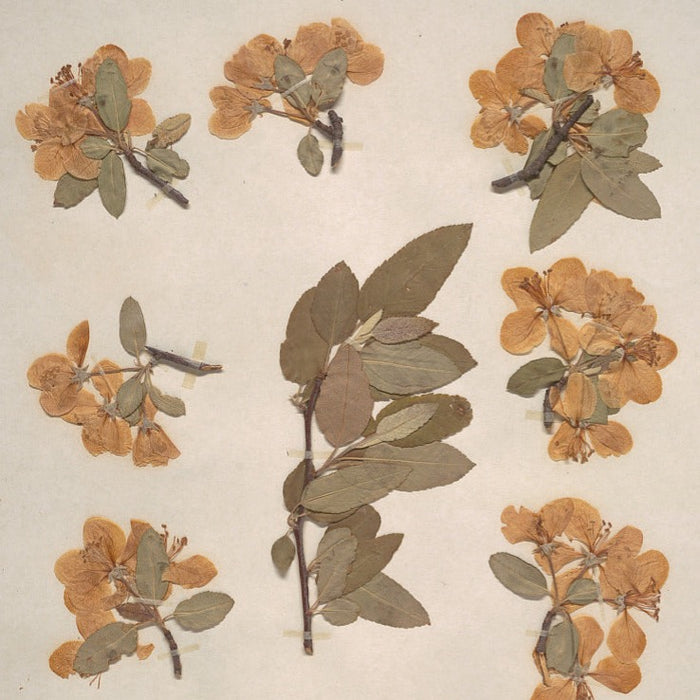
Prairie Crabapple (Malus ioensis)
*Preorder only*
Estimated Height at Pickup: 3-4’, 3 gal
A.k.a. Iowa crabapple and western crabapple. This is another species of high value to wildlife that is on the decline due to development. The late spring flowers are showy and attractive to pollinators, and the crabapples are eaten by a variety of wildlife. Grow to their fullest in full sun and moist soil, but are adaptable to some shade and dry soil! Will sucker if allowed, particularly if the top of the plant is damaged.
NOTE: As with other Malus, wild crabapples are susceptible to multiple leaf blights. These are unlikely to kill the tree, but do make the foliage look scrappy every few years. An excellent species for wildlife support, but probably not the best for an ornamental landscaping role!
Pollination: Likely self-pollinating.
Light: Full Sun, Part Sun/Shade
Soil Moisture: Wet Mesic, Mesic
Soil Type: Loam, Clay Loam, Rocky Loam
Height: 10’-25’
Width: 10’-15’
Bloom Color: White/Pink
Bloom Time: May-Jun
Fruit: Yellow/green crabapples are not sweet, and often persist on the tree into winter.
Fall Color: Orange, Red
Root Type: Branching
Notable Wildlife Interactions: Flowers attract bees, butterflies, and skippers. Hosts the tiger swallowtail and striped hairstreak butterflies, at least 50 moth species including the wild cherry sphinx, leafhoppers, borers, and smaller insects. Fruits are eaten by some birds and many mammals including coyote, foxes, skunks, groundhogs, squirrels, and deer. Dense foliage offers good habitat for birds. Occasionally browsed by deer and rabbits.
Notes:
Shipping Unavailable


